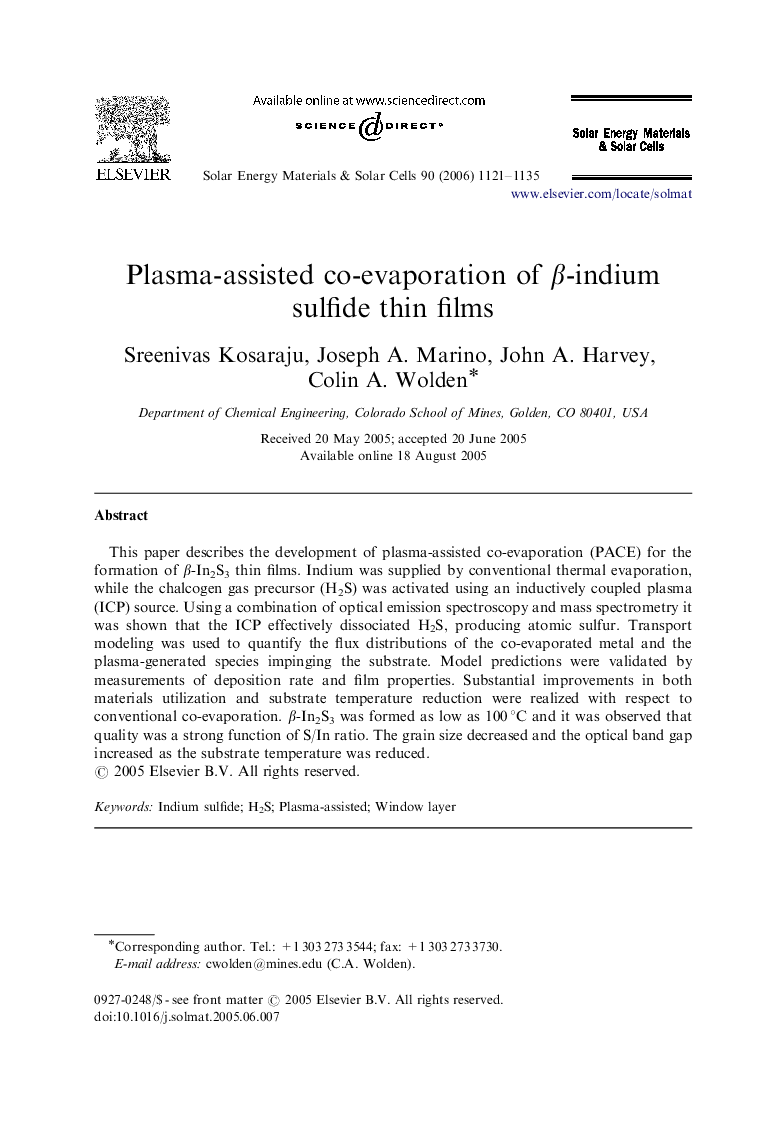| Article ID | Journal | Published Year | Pages | File Type |
|---|---|---|---|---|
| 81307 | Solar Energy Materials and Solar Cells | 2006 | 15 Pages |
This paper describes the development of plasma-assisted co-evaporation (PACE) for the formation of β-In2S3 thin films. Indium was supplied by conventional thermal evaporation, while the chalcogen gas precursor (H2S) was activated using an inductively coupled plasma (ICP) source. Using a combination of optical emission spectroscopy and mass spectrometry it was shown that the ICP effectively dissociated H2S, producing atomic sulfur. Transport modeling was used to quantify the flux distributions of the co-evaporated metal and the plasma-generated species impinging the substrate. Model predictions were validated by measurements of deposition rate and film properties. Substantial improvements in both materials utilization and substrate temperature reduction were realized with respect to conventional co-evaporation. β-In2S3 was formed as low as 100 °C and it was observed that quality was a strong function of S/In ratio. The grain size decreased and the optical band gap increased as the substrate temperature was reduced.
